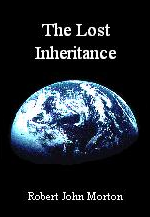The Lost Inheritance: Introduction
Footnote: Age of The Universe
As I understood it, the age of the Universe was generally thought to be between 10 and 20 billion years. The figure generally given was 15 billion years. This was the figure I quoted up until early in the year 2000. However, at about that time, I heard that during 1999, astronomers had obtained a more accurate estimate for the age of the Universe.
Using the Hubbell space telescope, they had made accurate measurements on pulsating stars which enabled them to state the age of the Universe as 13·7 x 109 years.
I do not personally understand how they can say this. What reason is there to suppose that time is in any sense a linear measure? Would the period of a hypothetical caesium clock have remained constant had it existed from the 'time' of the Big Bang unto this day? Would not the intense gravitational fields and accelerations have caused it to fibrillate unevenly? Indeed, is the measure of time in any way linear in different places relatively close at hand? Would a caesium clock on the surface of the sun or a neutron star measure time the way it does on Earth or in interstellar space? I feel not. How, therefore, can an age in years be attributed to something like the Universe? If anybody can explain it please email me.
As I understand the reports, when the Hubbell telescope was trained on a hitherto black patch in the sky to look into the very distant past (close to the purported age of the Universe) it saw very faint versions of fully formed galaxies; not embryonic matter. It seems to me that, by looking that far back in time, the Hubbell astronomers may have been looking at 'local' galaxies after the light from them had already made several repeat trips round the Universe. Were they looking through some kind of space-time manifold?
A space-time manifold is like a room with perfectly parallel mirrors on opposite walls — except you can walk through them! Perhaps a better analogy is a room with two doors in a spooky house. You leave the room through one door and immediately 'another you' walks in through the other door. Meanwhile the 'actual you' finds 'yourself' in an identical room having walked in through the opposite door from the one you walked through to leave the previous room. If the two doors in the room are opposite each other, what do you see through them when they are both open? — a manifold universe.
Parent Document |
© April 1997 Robert John Morton.
